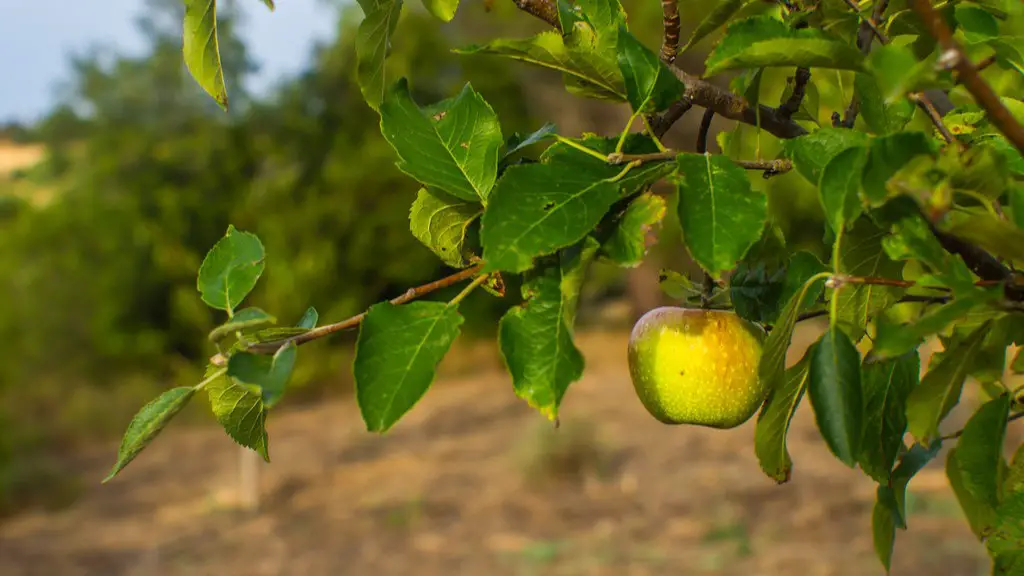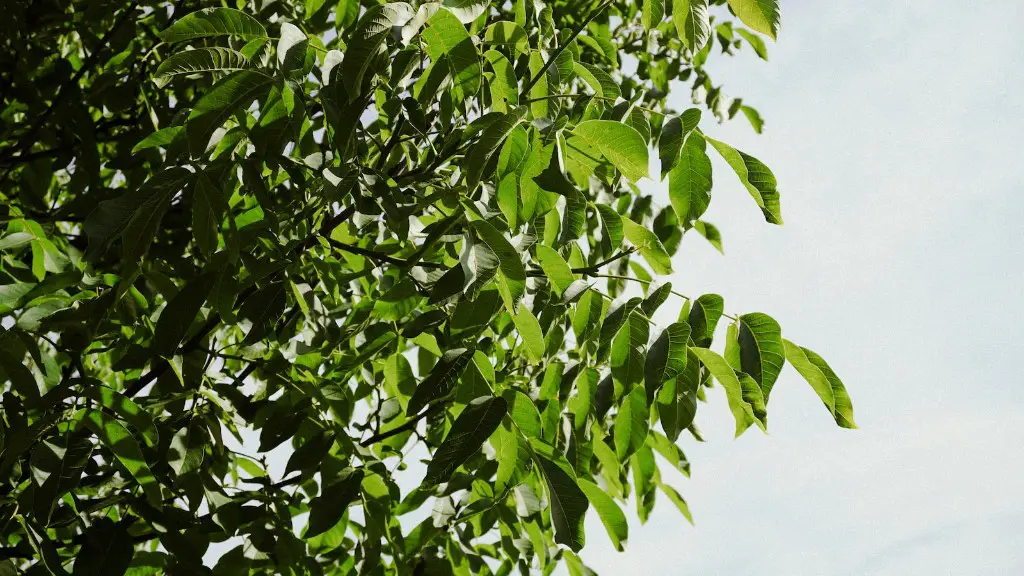Caring for an apple tree can be a very rewarding experience and one of the best ways to bring a piece of nature into your home. If properly taken care of, your apple tree will produce delicious fruit for many years to come. Here are some tips on how to take care of an apple tree.
Watering is key when it comes to apple tree care. Apples need 1-2 inches of water each week to keep the soil moist. Over-watering can cause root rot and other diseases, so check the soil regularly and make sure there isn’t too much water. Water at the base of the tree, not from above, as this could cause waterlogging.
Fertilizing an apple tree regularly helps it produce healthy fruit and maintain its strength. Different trees require different fertilizers, so it’s important to know what kind you’re working with and what kind of fertilizer would be beneficial for it. Most apple trees require fertilizer 3 times a year; once in spring, early summer and mid-fall.
It’s also important to prune your apple tree regularly. Pruning helps the tree maintain its shape, and it also prevents overcrowding which will help increase air circulation and fruiting. Pruning can be done in late winter or early spring, but only selectively remove up to one-third of the branches.
Apple trees need plenty of sun to grow, so make sure it’s planted in a spot where it gets at least six hours of sunlight a day. Make sure you’re also protecting it from strong winds which can damage young apple trees.
Apple trees need to be protected from pests and diseases, so apply an insecticide or fungicide regularly. Don’t forget to check your tree for signs of disease before, during and after flowering and fruiting. If you find any, take action immediately.
Lastly, mulching around the base of your apple tree can help keep the soil moist, suppress weeds, and provide nutrients to the soil. Make sure to apply a layer of mulch up to the trunk of the tree, but keep mulch away from the trunk itself so it won’t hold too much moisture.
Pruning an apple tree
Regular pruning is a key part of successful apple tree care, as it helps maintain the structure of the tree and also helps increase air circulation and fruiting. Pruning should be done carefully, selectively removing only one-third of the tree’s branches each year. Pruning can be done in late winter or early spring, but avoid pruning in summer as this may stimulate new growth that won’t have time to harden off before winter.
It’s important to use the right tools for pruning and always ensure they are sharp and clean; begin with larger branches and work your way to smaller ones. When pruning, make sure to angle the cut away from the bud so that the water can run off, preventing rot and disease. Always remove dead and weak branches first, followed by older and diseased branches, then finally heading back new growth.
In addition, don’t forget to remove any large, vertical limbs as they will take away energy from the tree’s horizontal branches. Also, it’s important to leave some fruit-bearing side branches to produce the following year’s fruit.
Protecting from pests and diseases
Apple trees need to be protected from pests and diseases in order to produce healthy fruit. Insecticides and fungicides should be applied regularly, especially during the flowering and fruiting stages. As well as applying these treatments, it’s also important to monitor your tree for signs of disease and infestation before, during and after these stages.
It’s also beneficial to keep weeds away from the base of the tree, as these can attract pests and diseases. Some gardeners also choose to use traps, such as yellow sticky traps, to control fly populations. These traps should be replaced every few weeks, unless they become clogged with insects.
Finally, keeping the area around your apple tree free of fallen fruit and debris will also help minimize pest and disease infestations, as well as keeping the area clean for harvesting.
Fertilizing an apple tree
Fertilizing an apple tree is essential for growth and good fruit production. Different types of fertilizer are available to suit specific needs depending on the type of apple tree. As a general rule of thumb, fertilize your apple tree 3 times throughout the year; once in the spring, early summer and mid-fall. Make sure to use a balanced fertilizer such as a 10-10-10 or a 10-20-20.
Also, water the tree after applying the fertilizer, as this will help it get deep into the soil so it can be absorbed by the tree’s roots. Keep in mind that too much fertilizer can actually cause harm to the tree, so only apply the recommended amount.
Fertilizing shouldn’t be necessary if your soil is good quality and rich in organic matter. You can check your soil composition using a soil test, which can also give you information about how much fertilizer to apply.
It’s also important to use organic fertilizers where possible, as these are more environmentally friendly and don’t contaminate the soil. Compost is also helpful, as it adds essential nutrients to the soil, promotes good drainage and helps retain moisture.
Watering an apple tree
Watering is important when it comes to apple tree care, as this will ensure the tree has enough moisture to grow healthy fruit. Apples need 1-2 inches of water each week, though the exact amount will depend on the size and age of the tree, as well as the climate you live in. Check the soil regularly and make sure the tree isn’t getting too much water.
Watering at the base and avoiding wetting the leaves is most beneficial, as this will help prevent waterlogging and fungal diseases. Where possible, try to use drip irrigation or soaker hoses as this will give a more even and efficient watering to the tree.
Lastly, it’s important to mulch around the base of the tree after watering. This helps the soil retain moisture and also suppresses weed growth which can trap water and encourage pests and diseases. Make sure to apply a layer of mulch up to the trunk of the tree, but keep mulch away from the trunk itself so it won’t hold too much moisture.
Position of an apple tree
Positioning an apple tree correctly is key for growth and healthy fruit production. Apple trees need plenty of light and should be planted in a spot where it will get at least six hours of sun each day. Avoid strong winds, as these can damage the tree, and also make sure there is plenty of space for the tree to grow without overcrowding.
It’s also important to plant apple trees in soil that drains well. If the soil is too wet or poorly drained it can lead to root rot and other health problems. If planting in clay soil, make sure to add plenty of compost or other organic matter to help improve drainage and soil health.
In addition, consider the local climate if you’re growing apples outdoors. Many varieties of apples require a chill period of several months each year in order to set fruit. Make sure to choose an apple tree variety that is suited to the climate you live in, as this will make a big difference to the health and production of your apple tree.
Lastly, if you’re looking to grow apples indoors, make sure you choose a dwarf or semi-dwarf variety, as these won’t grow too big and will be easier to manage. Also, choose a pot that suits the size of the variety you want to grow; make sure it’s deep enough for the roots to spread and heavy enough to support the weight of the tree.



